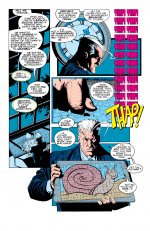Leatherhead
Possibly a Idiot.
Phoenix (MToF)
Phoenixes are big birds made out of fire, or more accurately fire elementals that are in the shape of a bird. Which in itself would be remarkable. But their most famous trait is their ability to be reborn after they die, locking them into a perpetual cycle of life.
In this edition, Phoenixes are as smart as beasts, and are simply seeking to burn everything they come across, at least until they are returned home to the Elemental Plane of Fire. While that lore is functional, it hardly lives up to the iconography of the famous bird. Instead consider what possible magical components and ingredients the players could harvest from such a creature, giving them a reason to go confront such a creature, or even better, a reason to bring one to the Material Plane despite the danger. Do you need some way to bring back the dead, or burn something down? The Phoenix can provide for ways to do both.
In combat however, the Phoenix is quite the epic tale. Possessing mobility that surpasses even the Leviathan, they can dart around the battlefield, burning everyone and everything that they touch. In fact, the Phoenix should always be moving. They possess an ability to squeeze through 1 inch cracks despite their gargantuan size, they have 120’ of flight speed and can use a legendary action to move. And to kick it all up a notch, whenever they enter the space of a creature, they deal automatic fire damage, and can ignite any object they touch for No Action. They can actually just plop down a 120’ long, 50’ wide strip of burning as they move. Granted, there are no hard rules for how much damage an inferno of this caliber deals, but there are Guidelines for it in chapter 8 of the DMG. The table recommends 4d10 for minor damage at levels 11-16ish (the Phoenix is CR 16, so we will run with that), ramping up to 10d10 for dangerous damage, and 18d10 for Deadly damage. With three damage ranges we can select the threat level we want, and even alter the damage during the combat. With the first few rounds dealing minor damage, and then the next few dealing dangerous representing the spreading fire, and finally the raging inferno engulfs even more of the area it becomes deadly damage. It’s a nice and thematic way of putting a time limit on an encounter.
But, naturally, that isn’t all. The Phoenix is a great drag and drop monster. They are gargantuan creatures with a decent STR and a huge movement speed after all. The elemental immunities and advanced movement options also lend themselves to this fighting style, because it is extremely hard to pin down this bird. To make matters worse, any creature touching the Phoenix or hitting it with a melee attack takes automatic fire damage, meaning that just attempting to escape the grapple is going to be painful to boot.
Finally the Phoenix has some miscellaneous tricks it can pull. For starters, it can attack, move, or move and attack for its legendary actions. Giving the bird quite a bit of tactical options when it comes to using both or either. And as the grand finale, whenever the Phoenix dies, it explodes. Burning everything around it. Normally, this would be an iffy tactic, but the Phoenix is also reformed as an invincible egg in this explosion, and this egg will hatch in 1d6 days. If the Phoenix can’t do the job the first time around, it can keep coming back as many times as the PCs will let it until they chuck the bird back into the fires from which it came. Exactly how much of their memories they retain is up to the DM of course, but do whatever makes the best story.
In the changeover, the Phoenix sheds their natural light an additional 30’. Unfortunately, they lost the ongoing fire damage from their Beak attack. Honestly, I would put that back on because having to spend an action to put yourself out, or spend an action to escape a grapple would make them basically perfect drag and drop monsters.




